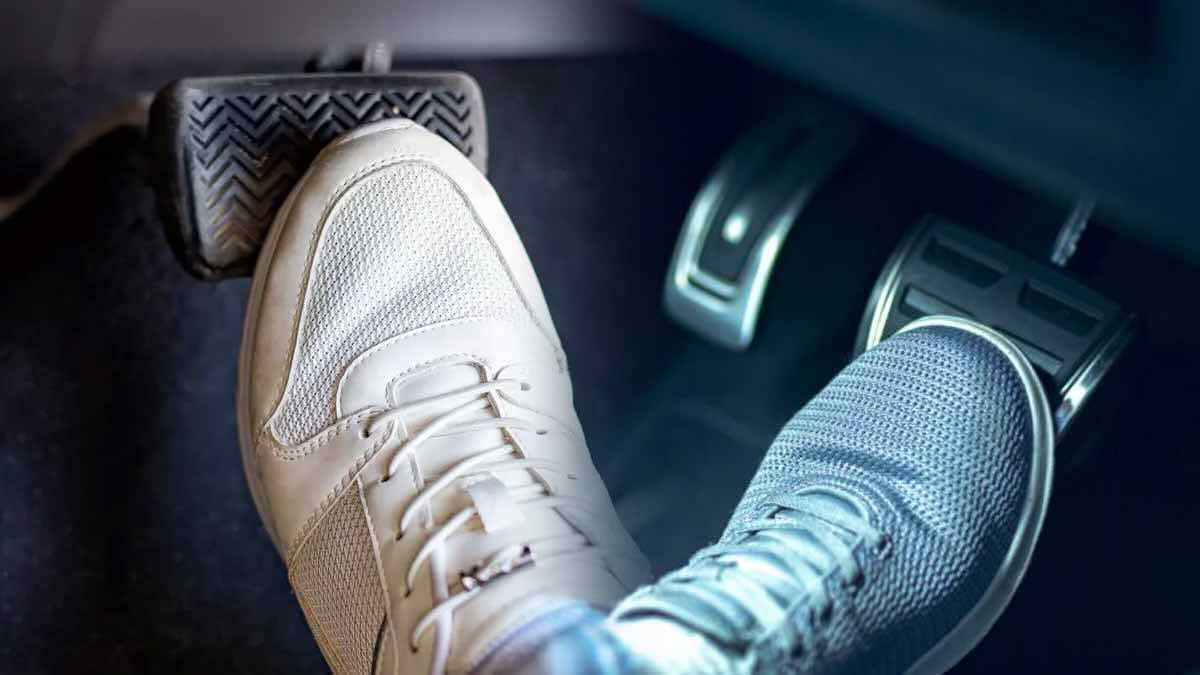Think your brake pedal is just for stopping the car? Think again. There’s a little-known function hiding in plain sight—one that could make your daily commute smoother, less stressful, and even a bit more luxurious. If you’ve ever found yourself stuck in traffic with your foot aching from constantly pressing the brake, this clever feature might just become your new best friend.
Meet Auto Hold: The Brake Feature You Didn’t Know You Needed
Picture this: you’re sitting at a red light or inching through a traffic jam. You take your foot off the brake—and your car stays perfectly still. No rolling, no jerking, no constant foot pressure. Sounds like magic? It’s not—it’s called Auto Hold.
This feature, available primarily on automatic transmission vehicles, acts like a ghost foot that takes over braking duties during stops. Especially useful in stop-and-go traffic or when driving uphill, Auto Hold keeps your car stationary without any extra effort from you.
Once a high-end luxury perk, Auto Hold is now available in mainstream models like the Renault Clio. And the best part? Activating it is as simple as pressing a button—usually marked with an “A” or labeled “Auto Hold.” When the dashboard light turns on, the system takes over temporary braking, leaving your foot free to relax.
Goodbye to energy dependence – Alaska discovers more than 1,200 TWh hidden under the ice, and the find could change the world
Goodbye Pepsi: Costco makes a major decision that completely changes its strategy with sugary drinks
Important Distinction: Auto Hold vs. Parking Brake
Before you ditch your parking brake for good—don’t. Auto Hold is not a replacement for your parking brake. It’s designed to keep the car still for a few minutes, not for long-term parking. If you’re on a steep hill, Auto Hold helps prevent lurching, but it won’t hold indefinitely. In fact, many newer vehicles will automatically engage the traditional parking brake if you’ve been idle for five minutes or more. Smart, right?
How to Use Auto Hold in 3 Easy Steps
-
Press the Auto Hold button – Look for an “A” symbol with a circle around it.
-
Brake normally – Come to a complete stop using the brake pedal.
-
Lift your foot – That’s it! The car stays still on its own.
Simple and intuitive. On models like the Renault Austral, the system feels so natural you’ll wonder how you ever drove without it. No more calf cramps in bumper-to-bumper traffic or awkward footwork on steep inclines. Auto Hold silently supports you—enhancing both comfort and safety.
Why Isn’t This More Widely Known?
It’s a mystery. Is it poor marketing? Driver habit? Automakers have been busy touting electric innovations and self-driving tech, but somehow this super practical feature gets left out of the spotlight.
Surprisingly, a recent survey found that over 60% of automatic car drivers have never used Auto Hold, simply because they don’t know it exists. That’s unfortunate, considering it can reduce driving fatigue by up to 30% in urban settings.
Some drivers worry it might malfunction or feel weird. But rest assured—Auto Hold disengages the moment you press the accelerator. There’s no delay, no jolt. If you’re unsure, try it out in an empty parking lot to get used to the sensation. Once you do, it’s tough to go back.
Common Mistakes to Avoid
Auto Hold isn’t perfect for every situation. Avoid using it on icy or unstable surfaces, where the sudden release of brakes might cause slipping. Also, double-check that the dashboard indicator is on before letting go of the brake pedal. And yes, this is a rare time we’ll recommend digging out the owner’s manual (you know, that dusty book in your glove box).
How detonating a nuclear bomb could protect planet Earth
Buys a coal mine for $2 million and discovers metals worth up to $36 billion
The Invisible Co-Pilot You Didn’t Know You Had
Auto Hold may not come with fanfare or flashing lights, but it’s a quiet revolution in driving comfort. It proves that not all game-changing innovations have to be flashy or expensive—some just make life easier behind the wheel.
So, next time you’re behind the wheel, take a moment to find that little “Auto Hold” button. Try it out. You might just find it’s one of the most underrated features in your car.
Did you already know about Auto Hold? Tried it yet? Drop your experience in the comments—because smart driving is all about sharing the road and the knowledge.
